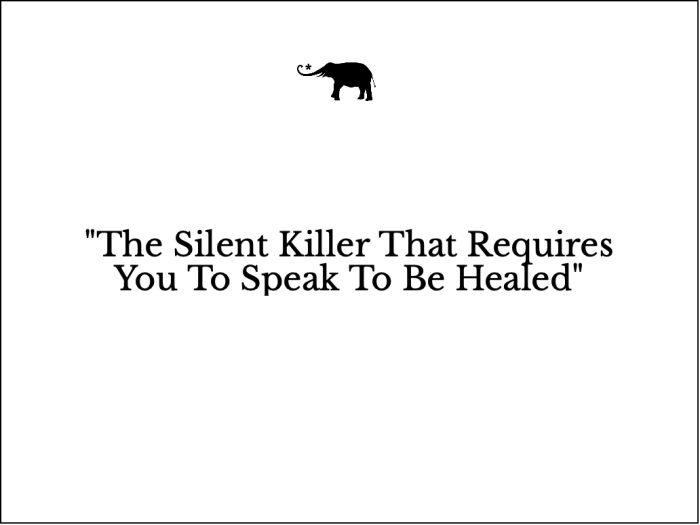Did you know that according to the National Center for PTSD, about 6 of every 10 men and 5 of every 10 women experience at least one trauma in their lives. The report shows that women are more likely to experience sexual assault and child sexual abuse while men are more likely to experience accidents, physical assault, combat, disaster, or to witness death or injury.
Trauma is a a deeply distressing or disturbing experience and can be physical or emotional. PTSD is Post Traumatic Stress Disorder, meaning following the trauma, you still feel the effects.
Trauma and adversity in childhood raise the risk of numerous health problems such as diabetes, heart disease, cancer, and mental illness in adulthood. This is because our bodies were made with fight or flight reflexes that cause our adrenaline to rush, our heart to race, and our minds to become more alert when we are in danger.
You can think of this as our built-in safety protocol. For example, you know that feeling when you almost crash your car, you are getting ready to get into a fight, or you’re afraid of what someone might say? Your palms get sweaty, your heart begins to beat twice as fast, and you want to find a way to escape or run. Now imagine a child who is being abused at home, they don’t just experience this occasionally; they tend to feel like this every day. And yet they have no escape! That same child grows up and that feeling doesn’t usually go away as an adult without some sort of intervention.
This is important because as an adult, if you are constantly living on edge, constantly stressed, constantly in fight or flight mode, it impacts your heart and other organs because it’s unnatural for you to have that much constant strain on your body.
In addition to the physical effects of trauma, the emotional effects can lead to bad decisions that ultimately cause other life issues. This is when we allow the unaddressed pain that is on the inside of us, eating away at us, to drive us to do things that we wouldn’t otherwise do.
Childhood trauma can sometimes leak into your adult life because, no matter how hard you’ve tried to go on, there is still a traumatised child living inside you.
Here are a few indicators for you to identity whether or not your inner child needs to be healed:
- You still have vivid flashbacks where you remember the traumatic event
- You have trouble relating to or connecting with loved ones, friends, and co-workers
- You experience strong emotions, including feelings at what might seem like the “wrong” time, for example; being afraid while you’re at home, or getting extremely angry or sad at work. You might also feel moody, anxious, sad, overwhelmed, or irritated.
- You have trouble sleeping, or the need to sleep a lot
- You have difficulty trusting people or think everyone is out to get you
- You have a hyperactive nervous system – feeling on-guard and easily startled
- You feel stuck, find yourself in a cycle of bad habits and don’t know why it’s so hard to change
If you are suffering from the effects of childhood trauma or PTSD that you want to overcome, I want you to know that healing is possible. There is hope. You can experience peace.
Here are 3 tips on how to start your healing from today:
- Develop emotional resilience. As Emily Dickinson wrote: “The best way out is through”. Experience your feelings, rather than pushing them away—notice them and name them. Feel the sadness. Feel the anger. Become aware of where the feeling is in your body—in your throat? In your heart? Your emotions then can serve you as information guides moving you towards healing.
- Take time. All the time you need. We are not made the same, and we all heal in our own way, in our own time. If the process becomes too intense, slow it down. Take a break.The healing of trauma, just like the healing of a broken arm, is essential to a healthy, functional life. Moving towards a healed life and realigning with your own wholeness brings you more fully into the present, making room for connection, intimacy, and freedom.
- Share your story. There is often a stigma of against speaking out. We are afraid people won’t understand us or they won’t believe us. Even when they do believe us, they often say unhelpful things. Sometimes we don’t want to hear “It’ll be okay”. Sometimes we don’t want to pull ourselves up by our bootstraps. Just listening to others is not always enough to heal your pain. We need to get our stories out, express ourselves and be understood. Sometimes, only once that happens can we really heal.
I hope that you have learnt something that will help you on your path to inner healing so you can reduce the risk of health issues and unnecessary problems in life caused by self-destructive behaviours.
I also hope that those of you who have not experienced such trauma, have learnt how to recognise those who have, so that you can be of support along their path to peace and recovery.
Let’s join forces and fight against this silent killer by speaking out!
Thank you.







Read 0 comments and reply